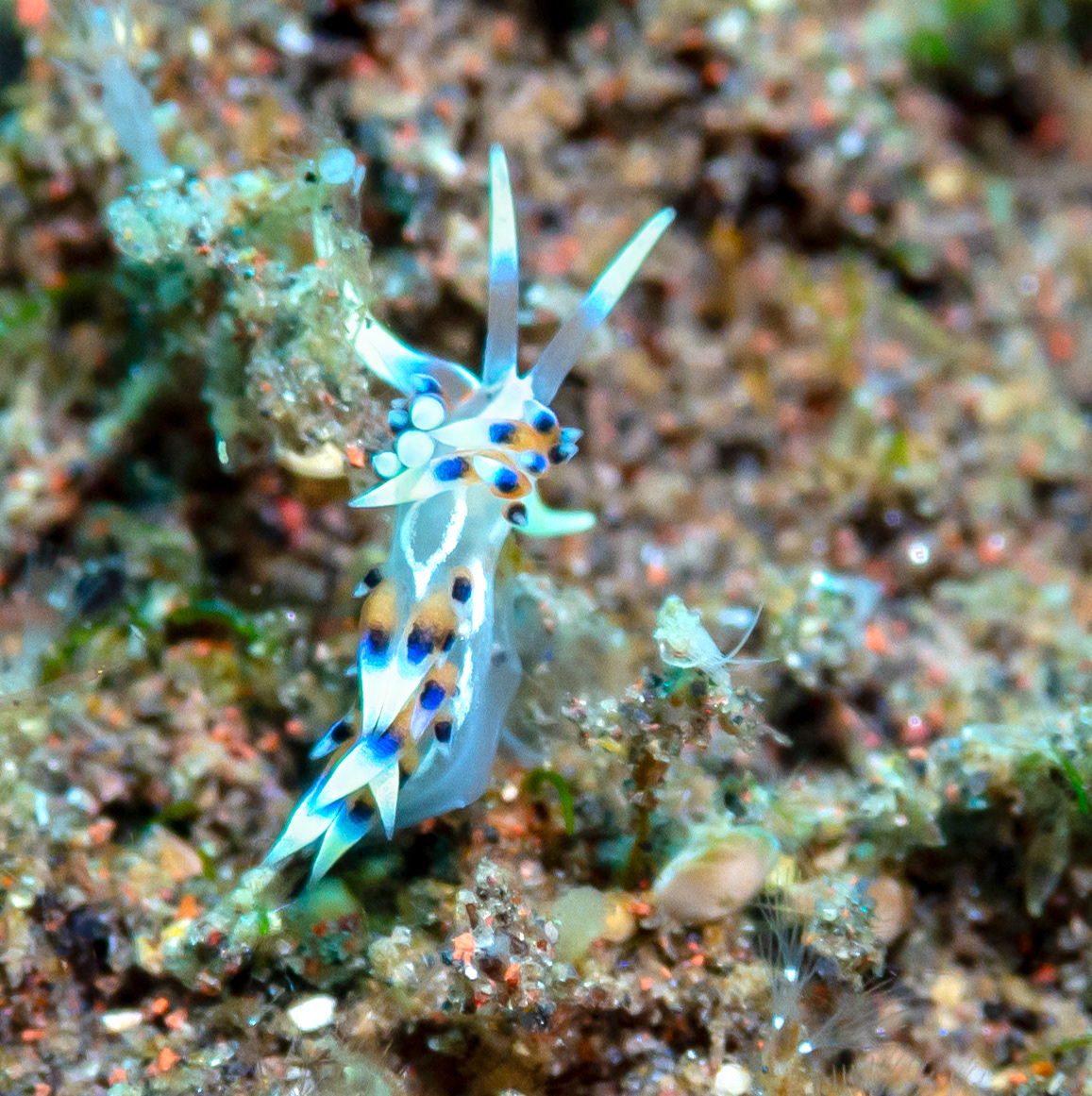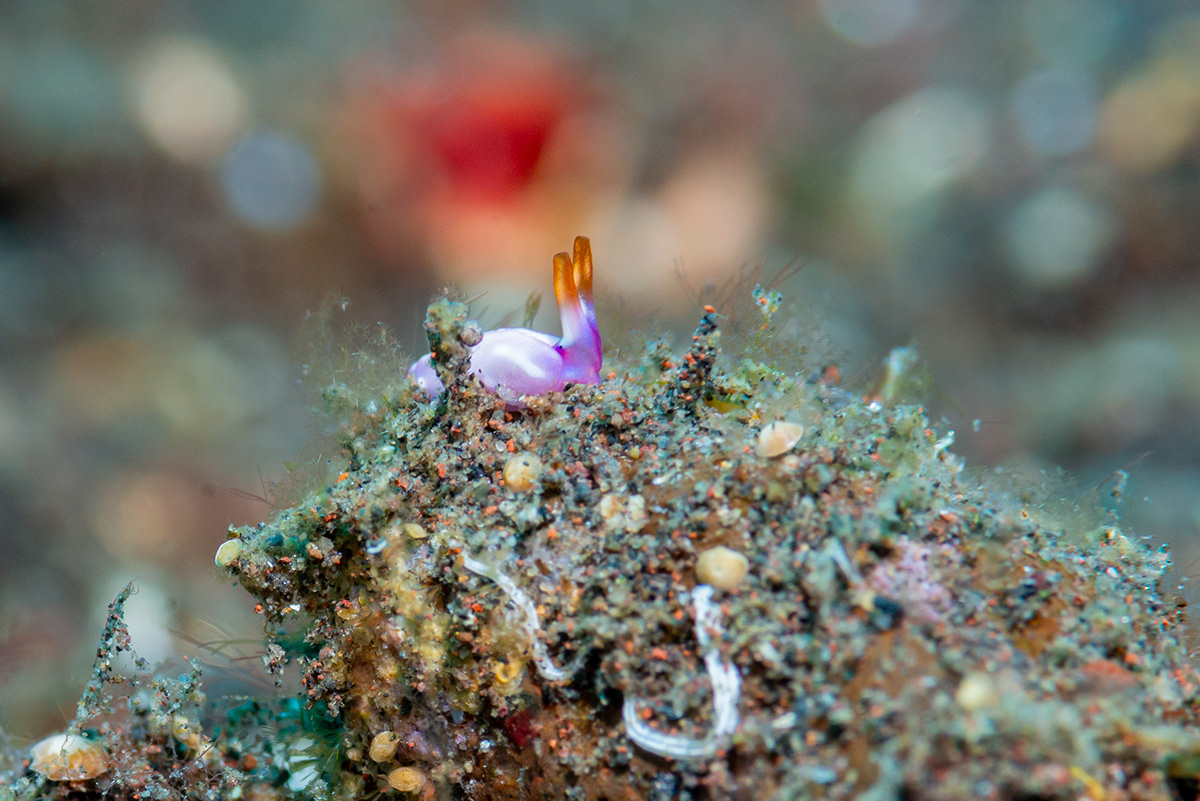
Doto greenamyeri (scientific name) Nudibranch (Sea Slug), 20mm

Facelinidae Fam. (? not sure) Nudibranch, 10mm

Costasiella sp. Nudibranch, 12mm

Trinchesia sp. Nudibranch, 10mm

Costasiella Kuroshimae Leaf Sheep Nudibranch, 6mm

Doto greenamyeri (scientific name) Nudibranch, 20mm

Flabeline Nudibranch, 18-20mm

Pikachu (?? not sure) Nudibranch

Pair of Costasiella sp. Nudibranches (each around 12mm) with two circles of eggs on leaf algae

Hypselodoris cf. maculosa Nudibranch, 25mm

Doriprismatica nudibranch, 40mm, with yellow band of eggs in the back

Phyllidiella pustulosa, Pimply phyllid nudibranch, 35mm

Phyllidiopsis annae Nudibranch, 12mm

Hypselodoris cf. maculosa Nudibranch, 25mm

Chelidonura , Headshield Slug, 30mm
Nudibranchs, often casually called sea slugs, are a group of soft-bodied marine gastropod molluscs that shed their shells after their larval stage. They are noted for their often extraordinary colours and striking forms. Currently, about 3,000 valid species of nudibranchs are known.
The word "nudibranch" comes from the Latin nudus "naked" and the Ancient Greek βράγχια (bránkhia) "gills".
The name nudibranch is appropriate, since the dorids (infraclass Anthobranchia) breathe through a "naked gill" shaped into branchial plumes in a rosette on their backs. By contrast, on the back of the aeolids in the clade Cladobranchia, brightly coloured sets of protruding organs called cerata are present.
Nudibranchs have cephalic (head) tentacles, which are sensitive to touch, taste, and smell. Club-shaped rhinophores detect odors.
The eyes in nudibranchs are simple and able to discern little more than light and dark. The eyes are set into the body, are about a quarter of a millimeter in diameter.
Text excerpt from Wikipedia: https://en.wikipedia.org/wiki/Nudibranch
